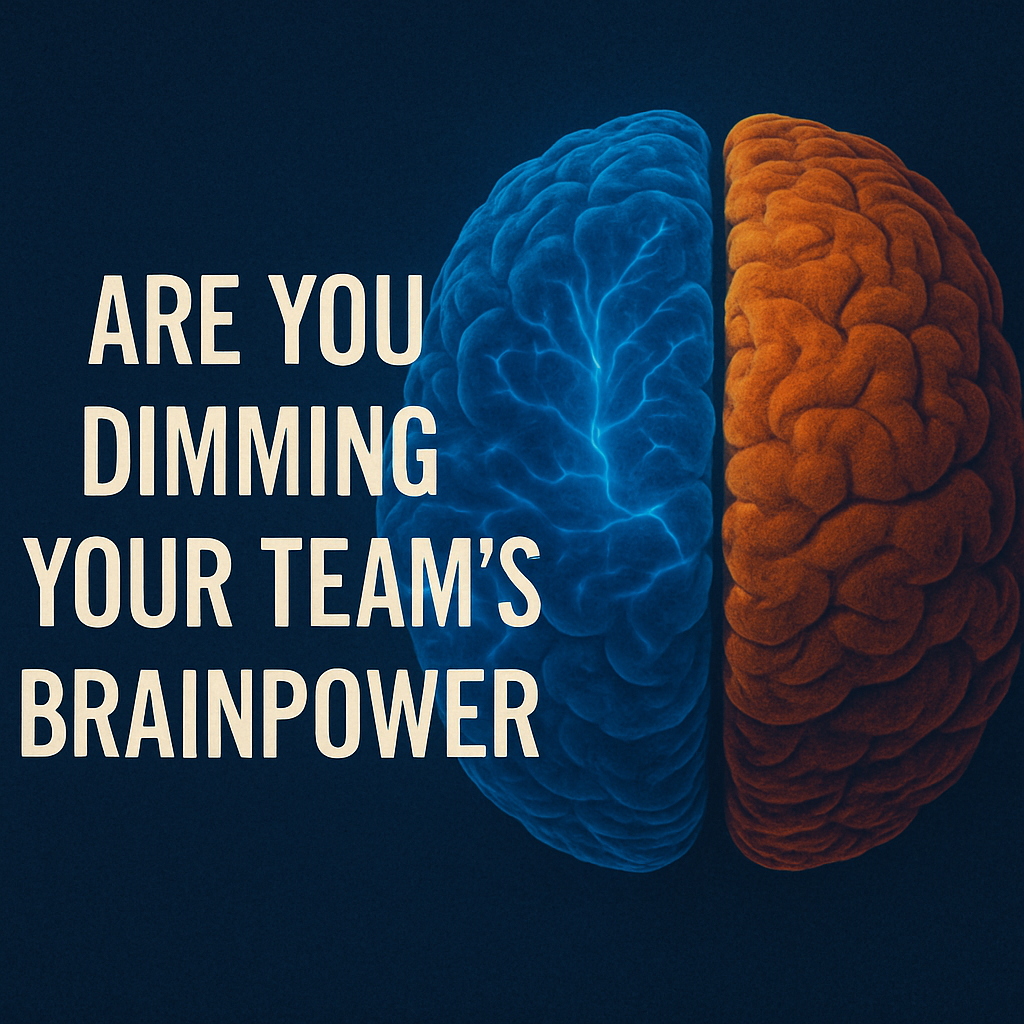|
Helping Companies Rethink, Recover & Refocus on the Future
Call John Grubbs (903) 295-7400
Let's get right to it: if you're a leader operating from a mindset soaked in pessimism, constant anxiety, or a chronic negativity bias, you might be doing more harm than you think. Not just emotionally but neurologically. And not just to yourself—but to the entire team you lead.
Sound dramatic? Maybe. But science is backing it up.
🧠 The Brain on Negativity: What the Scans Say
A fascinating study from Amen Clinics examined brain scans and cognitive data from nearly 20,000 patients diagnosed with anxiety disorders. Researchers found that people with a heightened negativity bias—those who instinctively interpret situations in the most pessimistic light—had reduced blood flow in areas of the brain associated with higher-order thinking and emotional regulation - namely, the frontal, temporal, and parietal lobes.
Here's the kicker: reduced blood flow was also found in the cerebellum, an area traditionally linked to motor control but increasingly understood as crucial for emotional regulation, memory, and cognitive efficiency. That's right—the areas that enable clear-headed decision-making, creative thinking, and emotional stability were underperforming in people predisposed to negative thinking.
Now pause and ask: if this is what chronic negativity does to an individual brain, what happens when the person leading your team—your manager, director, or CEO—functions with the same cognitive wiring?
🧠 The Contagion of a Negative Mindset
Leadership isn't just about strategy and output. It's about influence. And mindsets—especially emotional ones—are contagious.
Harvard Business School's Sigal Barsade coined "emotional contagion" to describe how emotions pass from one person to another, especially in tight-knit workgroups. Leaders, often the most visible and psychologically central figures in a workplace, are emotional amplifiers. Their mood, their tone, and, yes, their negativity bias have a ripple effect.
A leader who begins every meeting by spotlighting what's going wrong, who fixates on obstacles instead of outcomes, or who catastrophizes uncertainty doesn't just tank morale—they may be reshaping the cognitive performance of their teams.
⚠️ The Hidden Cost: Neurological Fatigue and Performance Decline
Imagine the cascading effect:
- A leader communicates anxiety and pessimism regularly.
- Team members mirror this posture—both consciously and unconsciously.
- Stress hormones like cortisol rise. Cognitive load increases. Emotional resilience drops.
- Neural blood flow starts mimicking the patterns of the leader: less in the frontal lobe and more in the amygdala (the fear center).
- What you get is a team that becomes more risk-averse, memory-impaired, and emotionally drained.
And when do cognitive fatigue and emotional burnout become norms? Decision-making slows, innovation stalls and safety mistakes...

